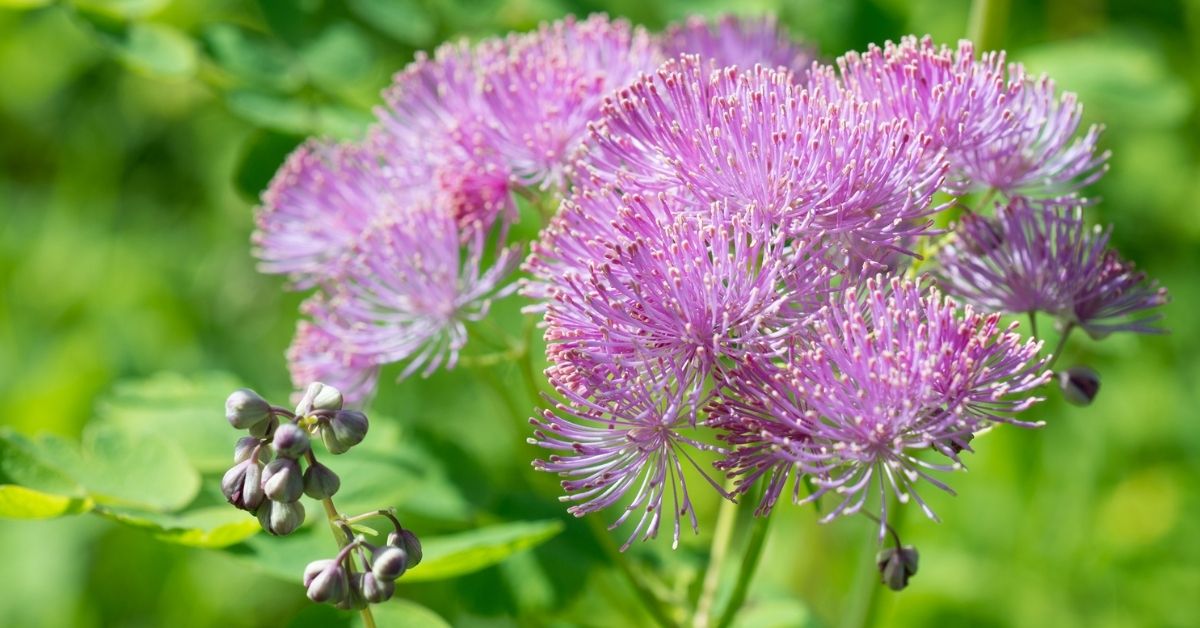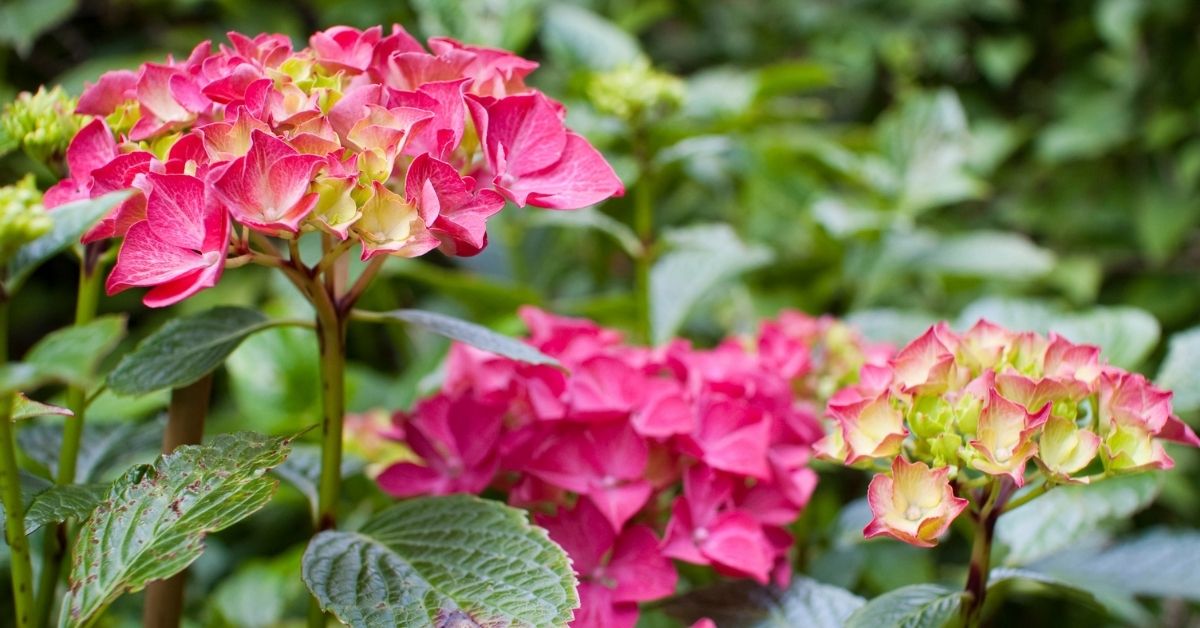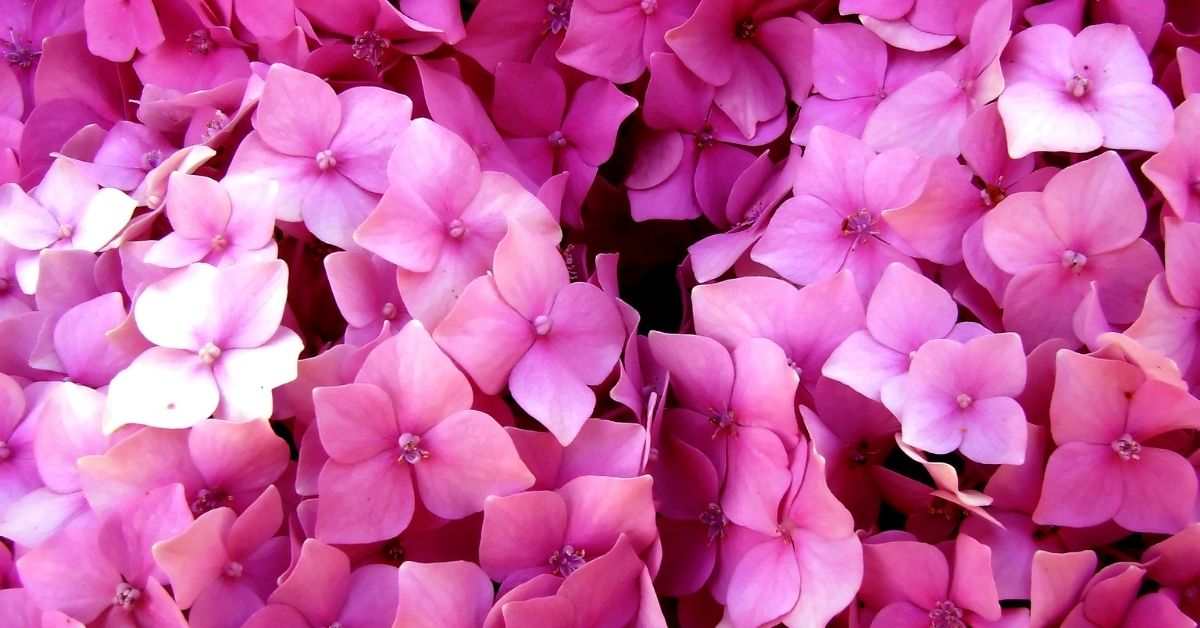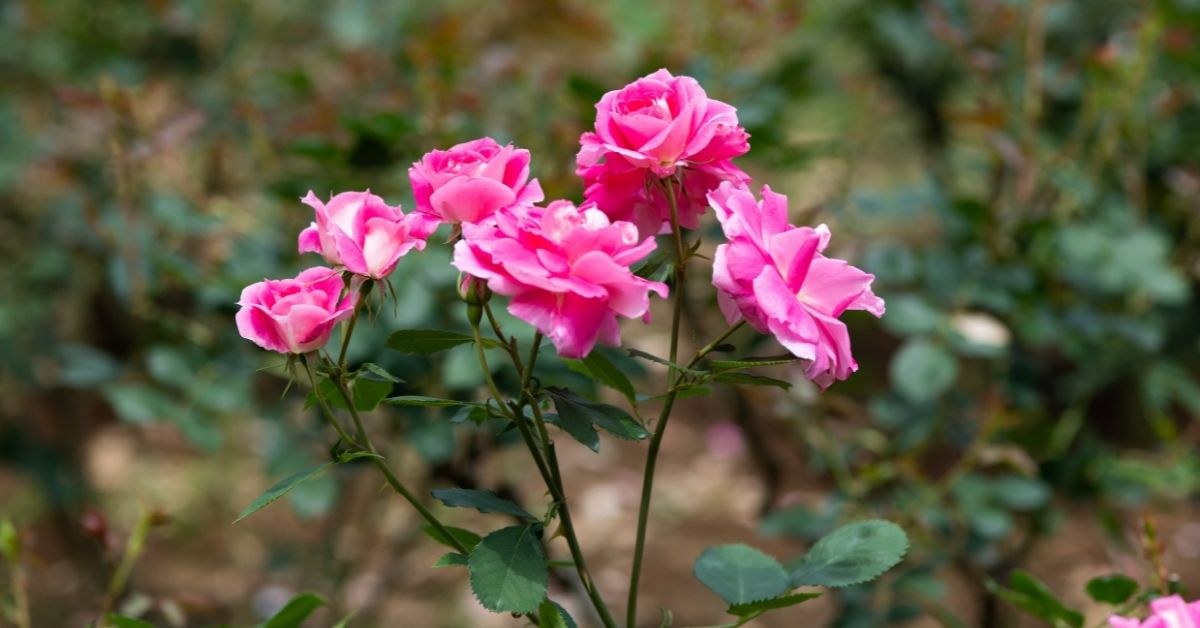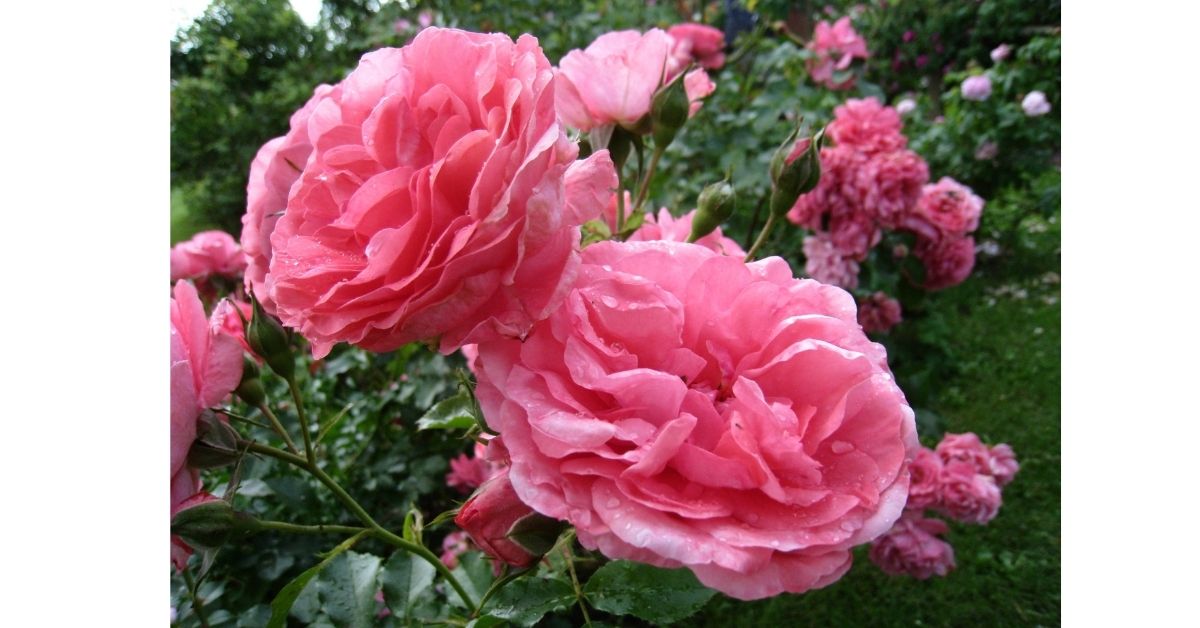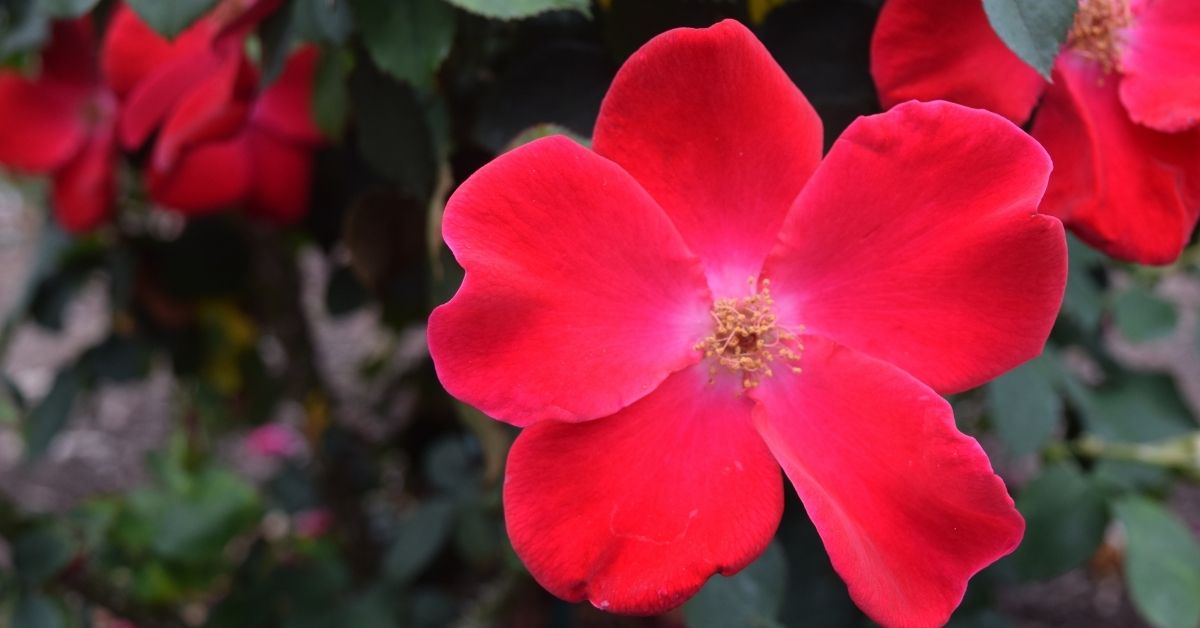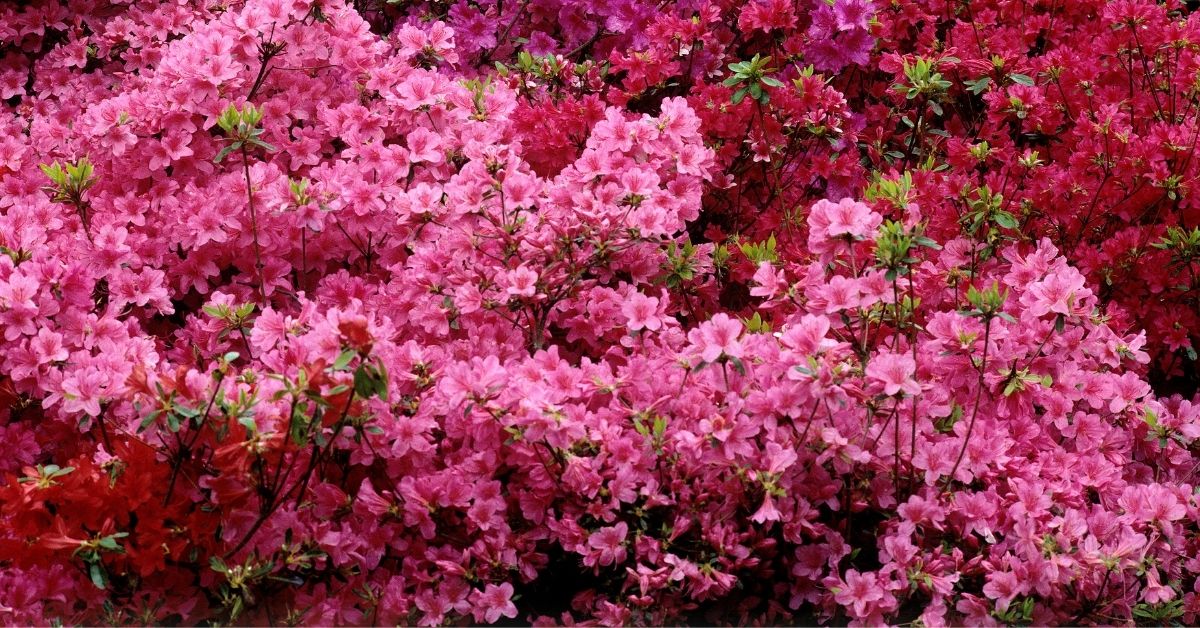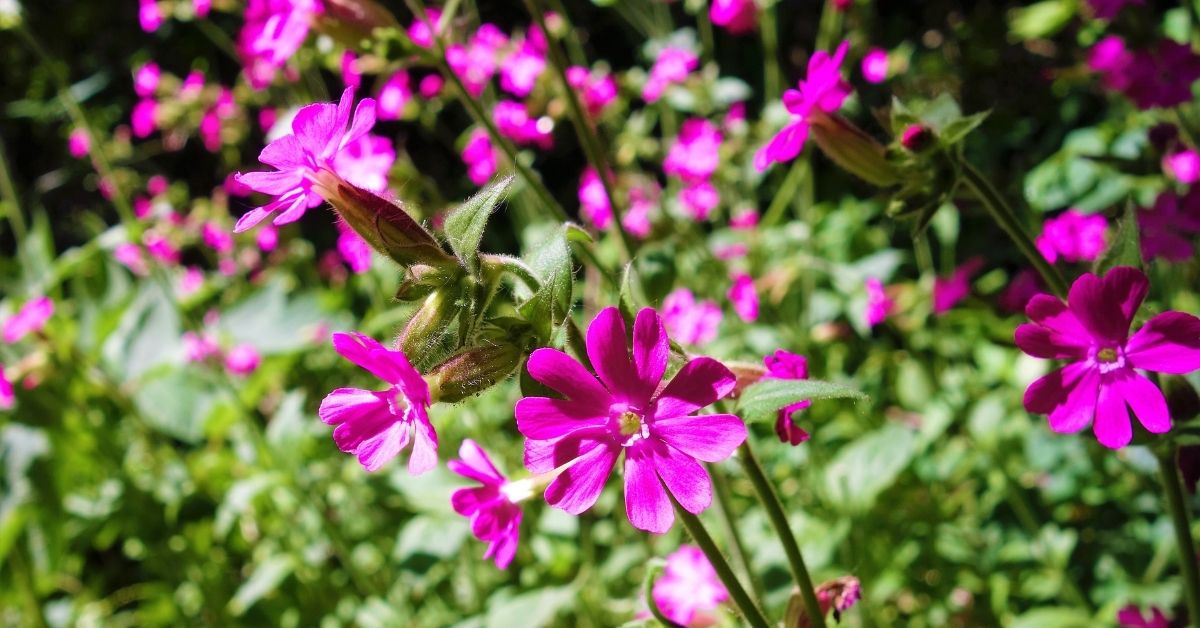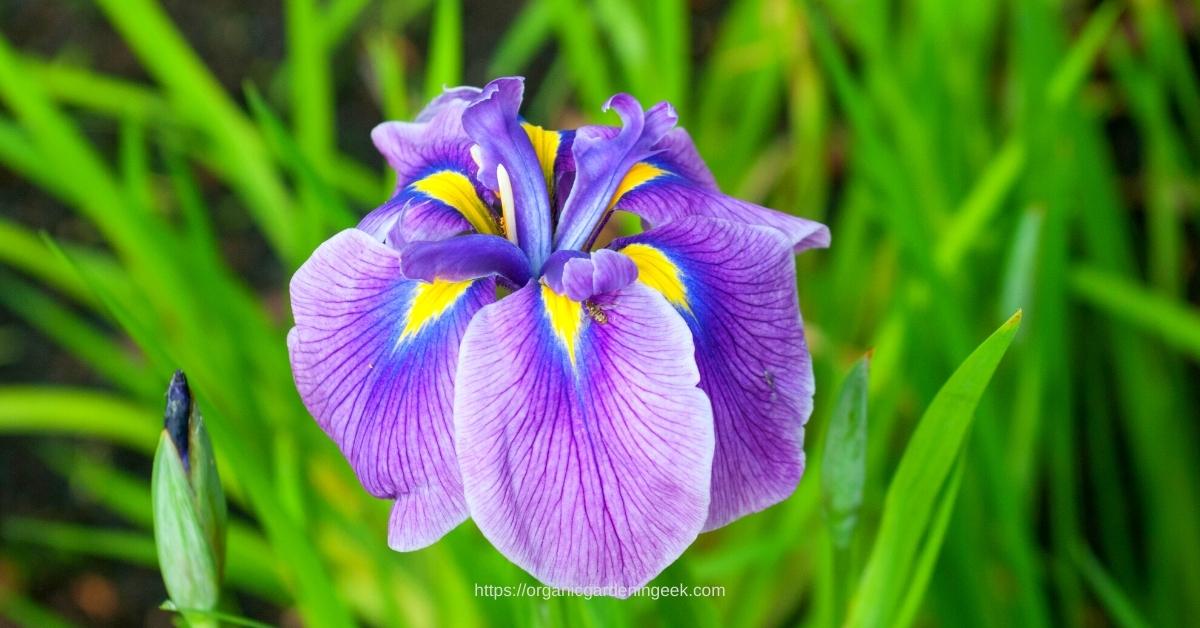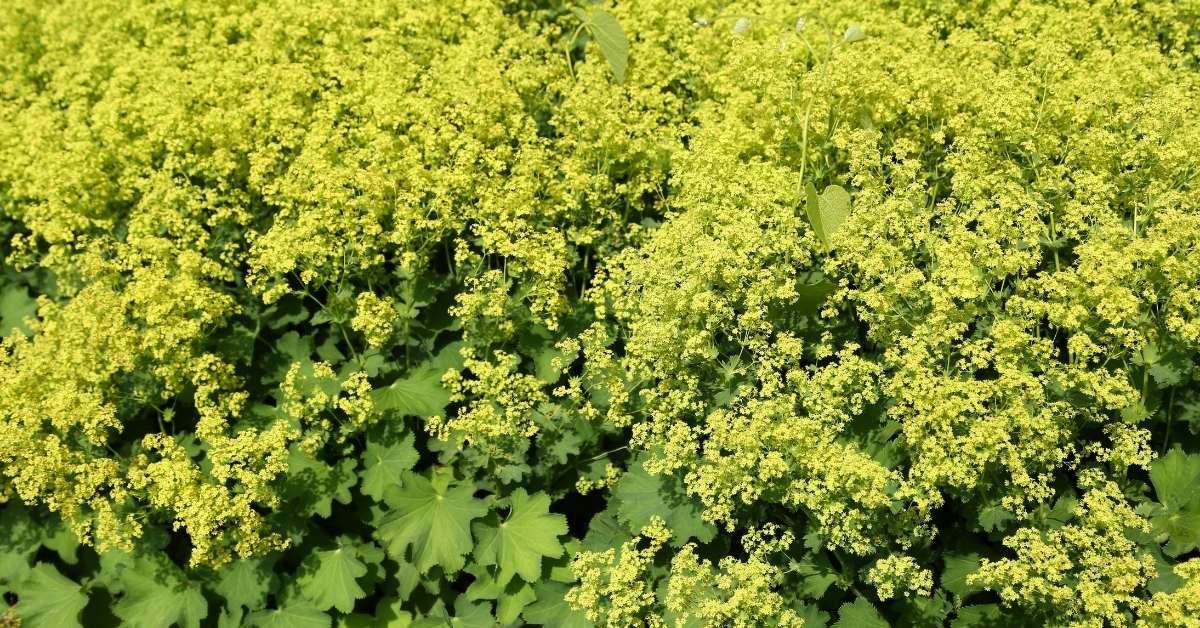Pink is the most popular color in the flowerbed. In all its gradations and tones, it runs the gamut from baby pastel and amethyst to a very deep pink that almost borders on cold red. This family of colors seems to touch the hearts and minds of gardeners and their visitors. Except in climates where the sun bleaches out its more pastel tones, pink is found in most gardens around the globe.
Vivid Pink Garden Plants
Here are 10 vivid pink garden plants that caught my eye. Some have grown in my garden for many years; others are new for me; I found them in recent trade catalogs.
1. Hydrangea macrophylla Abracadabra
If you garden in a warmer growing zone than I do, chances are you’ve had better success growing macrophylla (broad-leaf) hydrangeas than gardeners who live in colder climates.
The grower describes this relatively new variety as having flower heads resembling big, funky flying saucer lace-cap flowers that merge pink and white and mature to hot pink atop black satin stems. These distinctive stems provide interest in the garden before the summer flowers open.
The color of the flowers can be shifted to blue by adding aluminum sulfate to the soil. Abracadabra grows from 3 to 4 feet tall and wide and is hardy to USDA Zone 5.
2. Hydrangea macrophylla Paraplu
Vivid pink Paraplu is another new introduction for warmer climates. I am told that its downward arching mop heads of rich, vibrant, double florets appear like dainty umbrellas in shades ranging from candy pink to intense hot Pink.
In the soil where the pH is low, some purple will appear. The grower reports that Paraplu holds up well in the heat and withstands the rigors of Midwestern winters. This dwarf variety is expected to remain under three feet tall and wide and is hardy to USDA Zone 5.
3. Phlox subulata, Pink (Creeping Phlox)
It is a long-lived, cold-climate perennial and perfectly suitable for rock gardens, rugged ground cover, and sunny drought conditions. Cascading over slopes like puddly waterfalls, it grows 2 to 6 inches tall, spreads 12 to 18 inches in width, and is hardy from USDA Zone 2 to Zone 9.
The early spring pink flowers that illuminate the flowerbed are so intense that the color appears to have been mixed by a Disney cartoon illustrator. After the short-lived blooms fade, the rugged, evergreen, pinnate-textured foliage serves as an elegant-looking yet rugged groundcover that contributes lush, tactile texture throughout the year.
Does Phlox subulata need full sun?
Phlox subulata, often known as creeping phlox or Moss phlox, is a low-growing plant that makes an excellent ground cover. Yes, Creeping phlox thrives in well-drained soil with partial to full sun exposure.
When should I plant creeping phlox?
Creeping phlox may be planted in the spring or the fall, and they must be planted as soon as possible after obtaining them. If your plant comes in the spring, keep it wet in its container until your ground is suitable to plant.
Is phlox poisonous to dogs?
Although creeping phlox has delicate spring blooms, this ground cover is strong as nails! It’s very adaptable and thrives in difficult environments such as slopes, rocky regions, and boundaries. It spreads to produce a rich carpet of non-toxic leaves and blooms.
How long does phlox bloom for?
Tall garden phlox (Phlox paniculata hybrids) can give a vibrant summer show in perennial gardens, flowering for up to six weeks. Some cultivars bloom in mid-summer, while others don’t bloom until late August. The majority of tall garden phlox grow to be two to three feet tall, with a few growing to be significantly higher.
What to do with phlox after flowering?
Perennial phlox will come back year after year, although it is better to trim the foliage short after the first frosts. If left on the plant, it would rapidly become black. Cover with a thick layer of dead leaf mulch to keep the weeds at bay. Annual phlox may be removed because they do not regrow from year to year.
4. Rose Carefree Wonder
This staple in my garden has impressed visitors for the past fifteen years; I used to plant it in most of my garden projects until it became difficult to locate in my area. It grows four feet tall and three feet wide and blooms in a radiant, deep pink, with flower heads measuring four inches across.
So intense is its color that few will notice the reverse white petals. This easy-to-care-for rose is hardy to USDA Zone 4 and blooms continuously from June until the first snowfall.
5. Rose Double Pink Knock Out
Knock Out Roses are among the most disease-resistant rose bushes on the market. This variety is a compact, tidy shrub, growing 3 to 4 feet tall and wide, blooms in bright Pink. It is drought tolerant, self-cleaning, and winter hardy to USDA Zone 5 and blooms until frost.
6. Rose Pink Home Run
Vivid rich pink flowers cover this modest-sized shrub rose practically every day during the growing season. At 3 ½ to 4 feet tall and wide, it blooms continuously throughout the summer with extraordinary resistance to disease, pests, powdery mildew, and a high level of tolerance for downy mildew. It is winter hardy to USDA Zone 4 and blooms until frost.
7. Rhododendron Azalea Rosy Lights
This vivid plant scintillates as if each flower petal had been fitted with nano-sized neon tubes. As a result, during the day, the shrub glows like a Chinese lantern. Hardy in my location (USDA Zone 4), Rosy Lights will grow 4 to 6 feet tall and wide, depending upon the climate. This variety is part of the
Northern Lights Series of hybrid azaleas developed and released by the University of Minnesota Landscape Arboretum. Any azalea released and included in this series will have flower bud hardiness of -30 degrees to -45 degrees F to withstand Minnesota winters.
Where do Azalea rosy lights grow?
This plant thrives in wet, acidic, humusy, well-drained soils and may be cultivated in full sun to partial shade. Will perform well in a lot of sun, but prefers brilliant shade, filtered sunshine, or early sun, and can even do well in a little deeper shade.
What is the most shade tolerant azalea?
Shade-loving Rhododendrons: The flame azalea, Rhododendron calendulaceum – 6′, -10F, is a native American plant that grows 4 to 6 feet tall. In early July, when most other azalea species have done flowering, it produces clusters of 2-inch clove-scented yellow to red-orange blooms.
What is the hardiest rhododendron?
Northern Lights, a variant, was introduced in the 1980s. These are the toughest rhododendrons ever discovered or grown. They can tolerate temperatures as low as zone 4 and potentially as high as zone 3. Rhododendron x kosteranum and Rhododendron prinophyllum hybrids and crosses make up the series.
Are azaleas rhododendron?
Yes. Azaleas and rhododendrons are both members of the Rhododendron genus, with azaleas being a subspecies of the rhododendron family. Botanists believe there are insufficient botanical distinctions between the two to designate them as different species.
Do azaleas need lots of water?
In hot, sunny locations throughout the summer, you may need to water every three or four days. If in doubt, don’t water; azaleas can handle dry soil far better than wet soil. Azaleas require well-drained soil to thrive.
8. Silene Rolly’s Favorite (Silene Dioica)
Hardy to USDA Zone 5, this very floriferous perennial starts blooming in early spring and continues until early summer if cut back after the initial flush. It grows 11 to 15 inches high and 10 to 12 inches wide. Although it has a neat mounding habit, it propagates itself easily at the extremities of its circumference.
Gardeners are eager to share this plant with everyone they know because its intense pink color is hard to believe and impossible to describe. In bright sun, the pink petals are significantly warmer than the tones that appear in the photo above.
Is Silene Rollies Favourite Evergreen?
‘Rollie’s Favorite’ is a mound-forming, semi-evergreen perennial with ovate to oblong, dark green leaves and branching, semi-trailing stems producing clusters of pink flowers with white eyes in late spring and early summer.
How do you grow Silene?
Silene prefers full sun or some shade, as well as well-drained soil. Plant it where it will get afternoon shade in Zones 7 and above. It is critical to have well-drained soil. In moist environments, Silene suffers and dies.
9. Thalictrum Black Stocking
One gardener’s Pink is another gardener’s lavender. Although nurseries describe this perennial as flowering in bright lavender-magenta, I see vivid, deep Pink in the blazing sun of summer. That shade is further enhanced by a background of the nearly black stems of this tall, almost six-foot perennial.
Surprisingly, a plant of this height spreads to less than 2 feet wide, doesn’t require staking, and maintains a neat and disciplined appearance. This family of perennials has been one of the easiest to grow in my flower beds over the past twenty years.
When shopping, it is essential to keep in mind that not all Thalictrum bloom in the identical shade of Pink. T. aquilegifolium and T.rochebrunianum, for example, flower in much paler shades of pink or lavender. As a result, even though they are substantial and impressive perennials, they are not as visually satisfying as Black Stocking.
10. Viburnum Brandywine
The advance hype on this deer-resistant, berry-producing shrub reads like a Broadway production. I sure hope that I can reproduce its climactic season’s ending after I plant this shrub in my test garden this season.
The growers say that Hardy to USDA Zone 5, the extravaganza begins with an undistinguished, white flower and ends with a fruit display that some consider unrivaled in the plant world.
In late summer, the color of the immature green, pea-sized berries changes to shades of bright pink and then to hues of bright blue and wild grape. (The pink color is intensified when the blue and grape appear beside it). As a bonus, the glossy green leaves age to a very dark maroon red.
This species will not thrive in chalky or alkaline soils, and in the North-Eastern U.S., it is susceptible to the Viburnum bark beetle. However, it is claimed that these pests can be controlled without chemicals.
I hope these 10 gorgeous vivid pink garden plants help you with your growing perennials journey. Please don’t forget to share it if you like the post.
